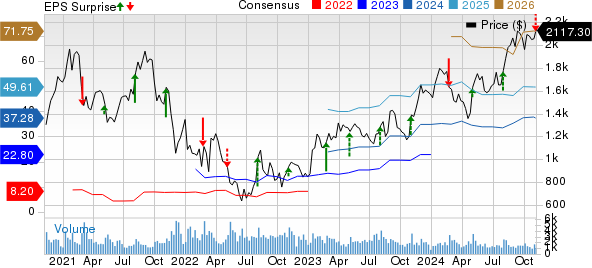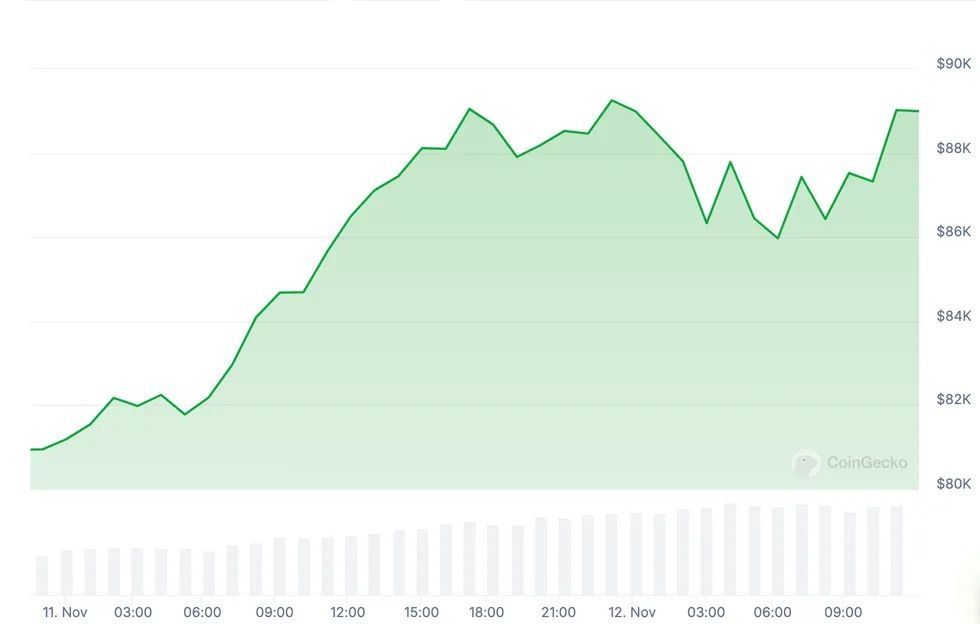Nvidia (NASDAQ: NVDA) became one of the hottest tech stocks over the past decade as the artificial intelligence (AI) market expanded. The chipmaker, which had previously generated most of its revenue from gaming GPUs, expanded into the data center space with more powerful GPUs that made it easier to process AI tasks.
That first-mover’s advantage lit a fire under Nvidia’s business as large companies upgraded their AI capabilities. As a result, its revenue grew at an impressive compound annual growth rate (CAGR) of 31% from fiscal 2014 to fiscal 2024 (which ended this January) while its stock skyrocketed 16,570% over the past 10 years. Analysts expect its revenue to continue growing at a CAGR of 35% from fiscal 2024 to fiscal 2027.

Image source: Getty Images.
Those growth rates suggest Nvidia remains one of the easiest ways to profit from the secular expansion of the AI market. Unfortunately, not every tech company that focuses on the AI market is destined to be a long-term winner like Nvidia. So today, I’ll focus on two weaker AI stocks that could fizzle out even as the broader market expands: AI software maker C3.ai (NYSE: AI) and auto chipmaker Mobileye (NASDAQ: MBLY).
C3.ai faces existential challenges
C3.ai develops AI algorithms that can be plugged into a company’s existing software to automate, streamline, and accelerate certain tasks. That strategy sounds promising, but it faces a lot of competition and generates about 30% of its revenue from a joint venture with the energy giant Baker Hughes. That deal is set to expire in fiscal 2025 (which ends in April 2025), and there’s no guarantee it will be renewed.
C3.ai’s revenue rose just 6% in fiscal 2023, decelerating from its 38% growth in fiscal 2022 and broadly missing its original target of 22% to 25% growth. It blamed that slowdown on the macro headwinds and an abrupt shift from its stickier subscription-based plans to more flexible usage-based fees. C3.ai claims it can generate 11% to 20% revenue growth in fiscal 2024, but its habit of overpromising and underdelivering doesn’t inspire much confidence in that optimistic outlook.
Last September, the company abandoned its original goal of achieving profitability on a non-GAAP (adjusted) basis by the end of fiscal 2024 (which ends this April) in favor of developing and marketing more algorithms for the generative AI market. That situation seems dire, yet C3.ai’s stock still looks expensive at 10 times this year’s sales — even though it’s dropped nearly 40% below its initial public offering (IPO) price. That’s probably why its insiders sold more than 7 times as many shares as they bought over the past 12 months.
Mobileye faces a severe cyclical slowdown
Mobileye, which was spun off from Intel in an IPO in 2022, is the world’s top producer of advanced driver assistance systems (ADAS), which use chips, cameras, and sensors to help drivers park their cars, stay in the correct lane, and tap other semiautonomous driving features. These systems are powered by its own EyeQ computer vision chips, which are manufactured by its longtime partner STMicroelectronics (NYSE: STM) instead of Intel’s own foundries.
Mobileye might seem like a great way to invest in the growth of the connected and driverless vehicle markets, but it faces a rough slowdown. Its revenue rose 22% in 2022 and 11% in 2023, but it expects a 6% to 12% revenue decline in 2024.
Back in 2021 and 2022, many of Mobileye’s clients stocked up on too many EyeQ chips to insulate themselves from the supply chain headwinds. Mobileye also ramped up its chip orders from STMicroelectronics in the second half of 2022 to address its supply chain disruptions in the first half of the year.
Those two factors caused Mobileye to suffer a supply glut of about 6 million to 7 million EyeQ chips at the end of 2023. Analysts expect its adjusted earnings to plunge 51% this year as it slogs through those excess inventories.
Mobileye will likely recover from this cyclical downturn over the next few years, but its stock looks too expensive right now at 62 times forward earnings — even after it lost nearly 40% of its value over the past 12 months. Intel, which still owns a majority stake in Mobileye, also sold a $1.5 billion stake in the company last year — so it might be prudent to shun this out-of-favor chip stock until a few more green shoots appear.
Should you invest $1,000 in Nvidia right now?
Before you buy stock in Nvidia, consider this:
The Motley Fool Stock Advisor analyst team just identified what they believe are the 10 best stocks for investors to buy now… and Nvidia wasn’t one of them. The 10 stocks that made the cut could produce monster returns in the coming years.
Stock Advisor provides investors with an easy-to-follow blueprint for success, including guidance on building a portfolio, regular updates from analysts, and two new stock picks each month. The Stock Advisor service has more than tripled the return of S&P 500 since 2002*.
*Stock Advisor returns as of February 26, 2024
Leo Sun has no position in any of the stocks mentioned. The Motley Fool has positions in and recommends Nvidia. The Motley Fool recommends C3.ai, Intel, and Mobileye Global and recommends the following options: long January 2023 $57.50 calls on Intel, long January 2025 $45 calls on Intel, and short February 2024 $47 calls on Intel. The Motley Fool has a disclosure policy.




